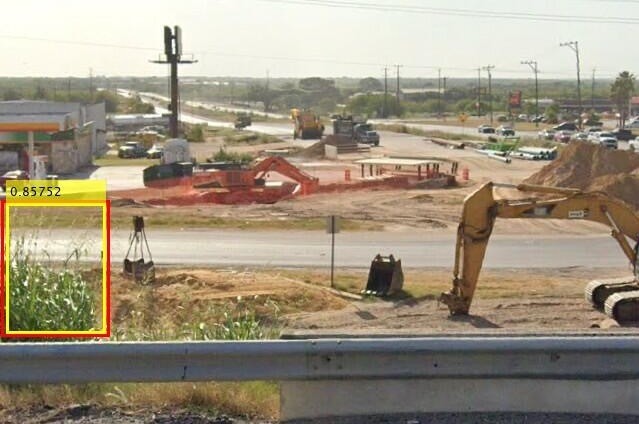Researchers at the University of California, Davis, have used artificial intelligence (AI) and Google's Street View database to combat the spread of johnsongrass, an invasive plant that threatens agricultural lands and native flora.
Johnsongrass, notorious for outcompeting crops such as cotton and causing health problems in horses, has long perplexed farmers due to a lack of effective control methods.
However, this new approach developed by UC Davis researchers, called "Google Weed View," offers a more cost-effective and time-efficient solution.

US Researchers Use Google's Street View, AI Algorithms to Spot Invasive Plant
How the Technology Works
The breakthrough lies in the utilization of Google's expansive Street View database, which hosts a massive library of panoramic images. By deploying AI algorithms, the team has successfully identified over 2,000 instances of johnsongrass across the Western United States.
This accomplishment, achieved at a fraction of the cost and time involved in traditional in-person surveys or drive-by inspections, marks a significant stride in ecological research and land management.
Dr. Mohsen Mesgaran, an assistant professor in the Department of Plant Sciences at UC Davis and a key figure behind this innovation, emphasized the flexibility and scalability of this approach.
"Once the model is trained, you can just go and run it on millions of images from Google Street View," Dr. Mesgaran explained, underlining the potential for swift and extensive application.
Google Weed View's Potential
This cutting-edge technique is not confined to johnsongrass alone. By merely labeling new items in Street View photos and training the algorithm accordingly, the method can seamlessly extend to identify various other plant species, aiding in the rapid detection of problematic flora.
Moreover, beyond its immediate utility in identifying invasive plants, Google Weed View offers a unique opportunity to examine the correlation between climate patterns and the proliferation of weeds and invasive species across vast geographical scales.
Dr. Kassim Al-Khatib, another key researcher involved in the project, underscored the broader impact of the innovation. "Johnsongrass is a major weed not just in California but worldwide," Dr. Al-Khatib remarked. "It's very difficult to control and poses a problem for various agricultural sectors."
The methodology behind this groundbreaking technique involved meticulous data curation and algorithmic training. Researchers extensively utilized Street View's panoramic photos, setting specific parameters to detect johnsongrass instances, culminating in the identification of 2,000 locations in four western states.
This innovative approach not only offers a cost-effective alternative but also showcases the potential for technology to revolutionize ecological research and land management practices.
With further refinements and scaling, the team aims to extend this method to cover the entire United States, bolstering efforts to mitigate the impact of invasive plant species on agricultural productivity and ecological balance.
In a parallel context, a prior study utilizing Google Street View for urban planning demonstrates the versatility of this technology beyond ecological research, hinting at a myriad of potential applications in various domains.
Stay posted here at Tech Times.
Related Article: AI Image Generation Tools Contributing to Carbon Footprint, Study Shows










